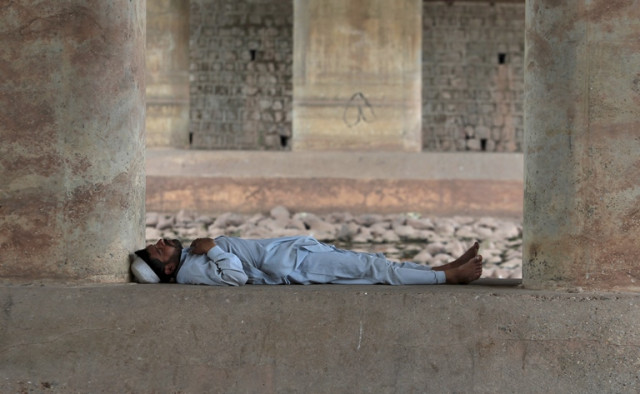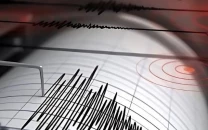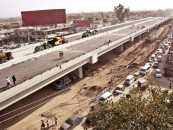Heatwave approaching
The weather is expected to be very unkind come the summer months and the meteorological office has issued a warning

PHOTO: AFP
One of the steps on the cards is to ensure uninterrupted electricity supply. This is a necessary measure, particularly for low-income neighbourhoods. But beyond this, there is a need for widespread media campaigns that guide people on how the symptoms of a heat stroke can be identified and the steps to be taken immediately afterwards. Government-established camps that provide free and clean water and rehydration drinks should also be set up and people involved in physical labour, such as domestic helpers or construction workers, should be exempted from work during days when the temperature is too extreme. Last year, the scale of the tragedy was so great and sudden that it mobilised many people to come out to help. Donations were collected and young doctors and medical students volunteered at major hospitals to save lives. This was heartening activism, but given recent experiences, it is safe to say that people do not react in exactly the same manner every time. We can see this from the experiences of the 2010 floods and the earthquake of 2005. People volunteered in great numbers in these tragic times, but the level of activism substantially reduced for the floods and earthquakes that occurred in subsequent years. The provincial and federal governments must step up this time and ensure that health facilities are up to the mark, and the weakest and most vulnerable people in society are not left to fend for themselves.
Published in The Express Tribune, February 26th, 2016.
Like Opinion & Editorial on Facebook, follow @ETOpEd on Twitter to receive all updates on all our daily pieces.














COMMENTS
Comments are moderated and generally will be posted if they are on-topic and not abusive.
For more information, please see our Comments FAQ